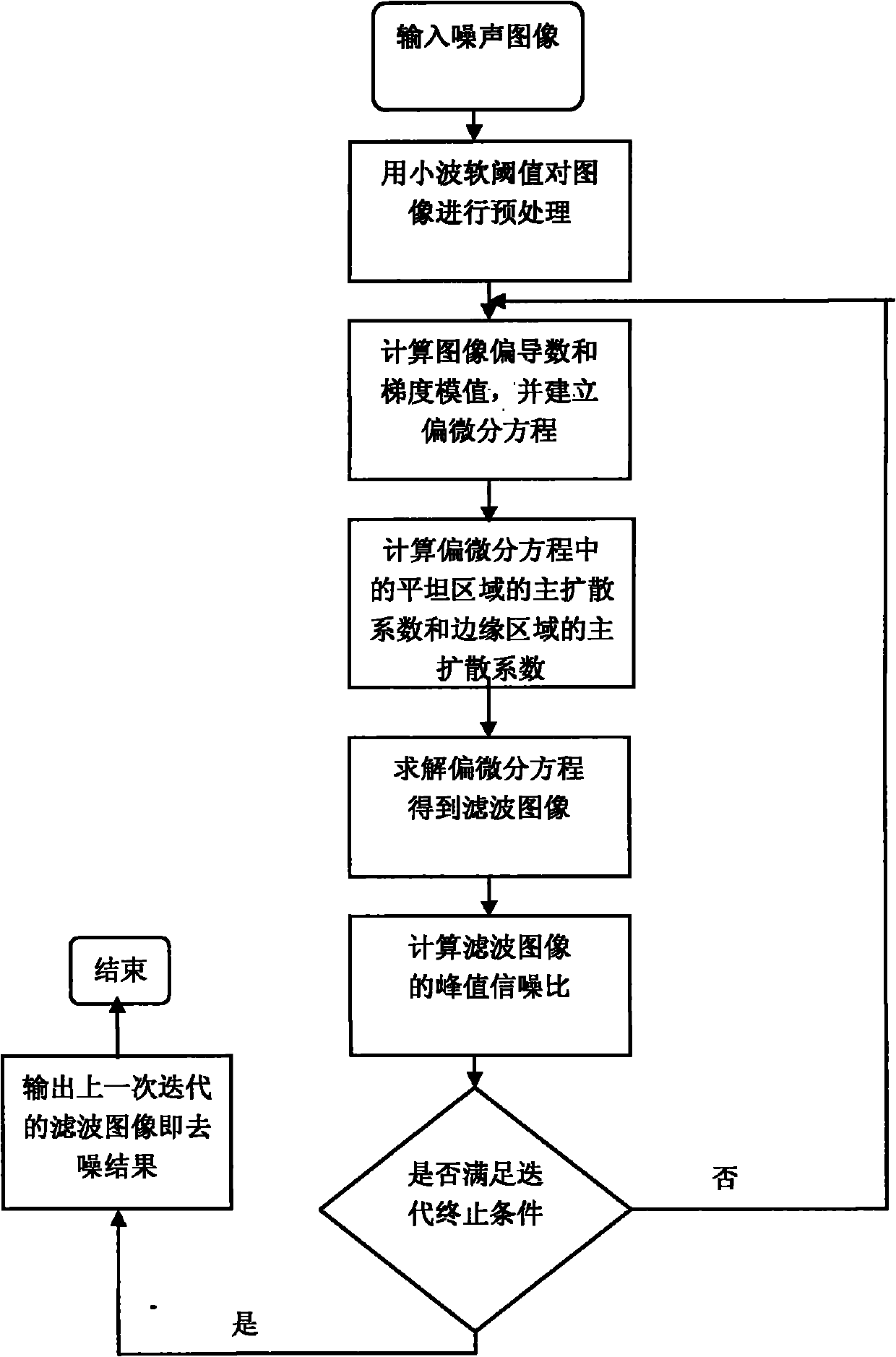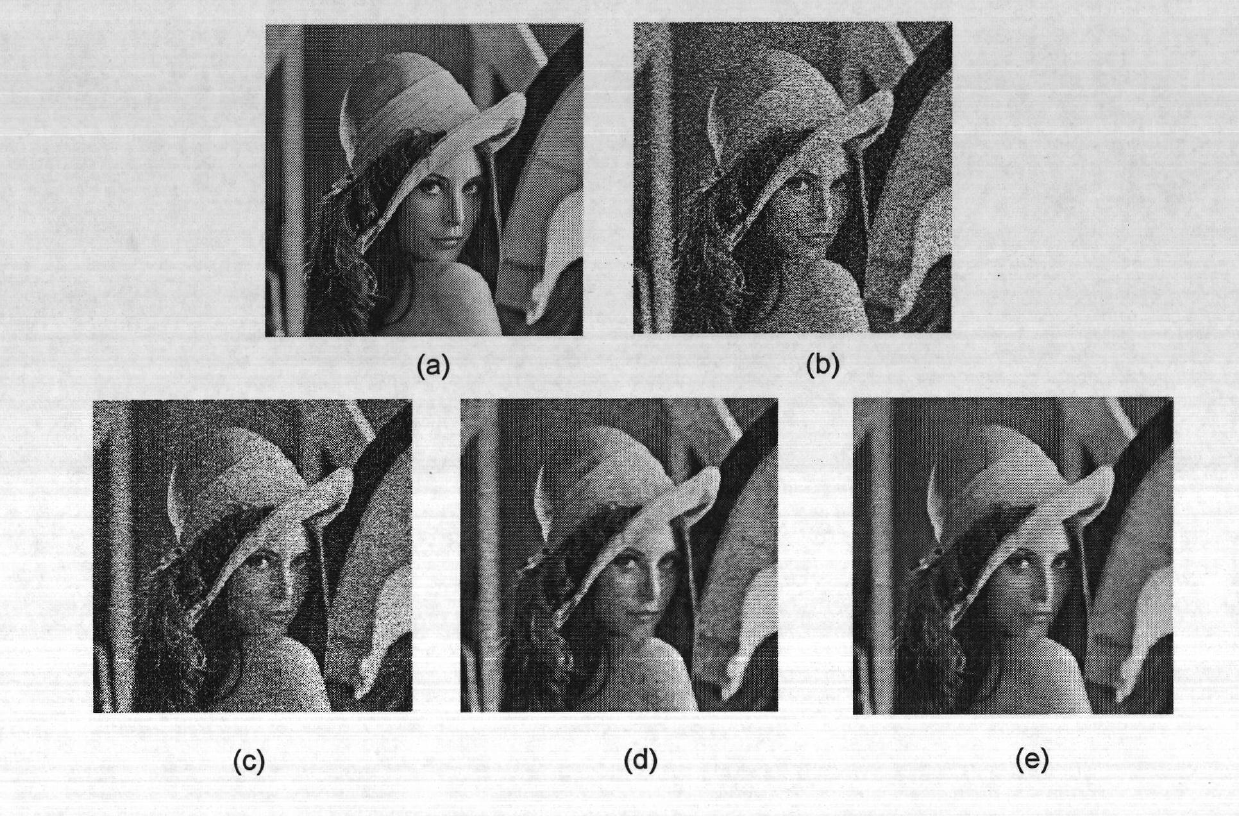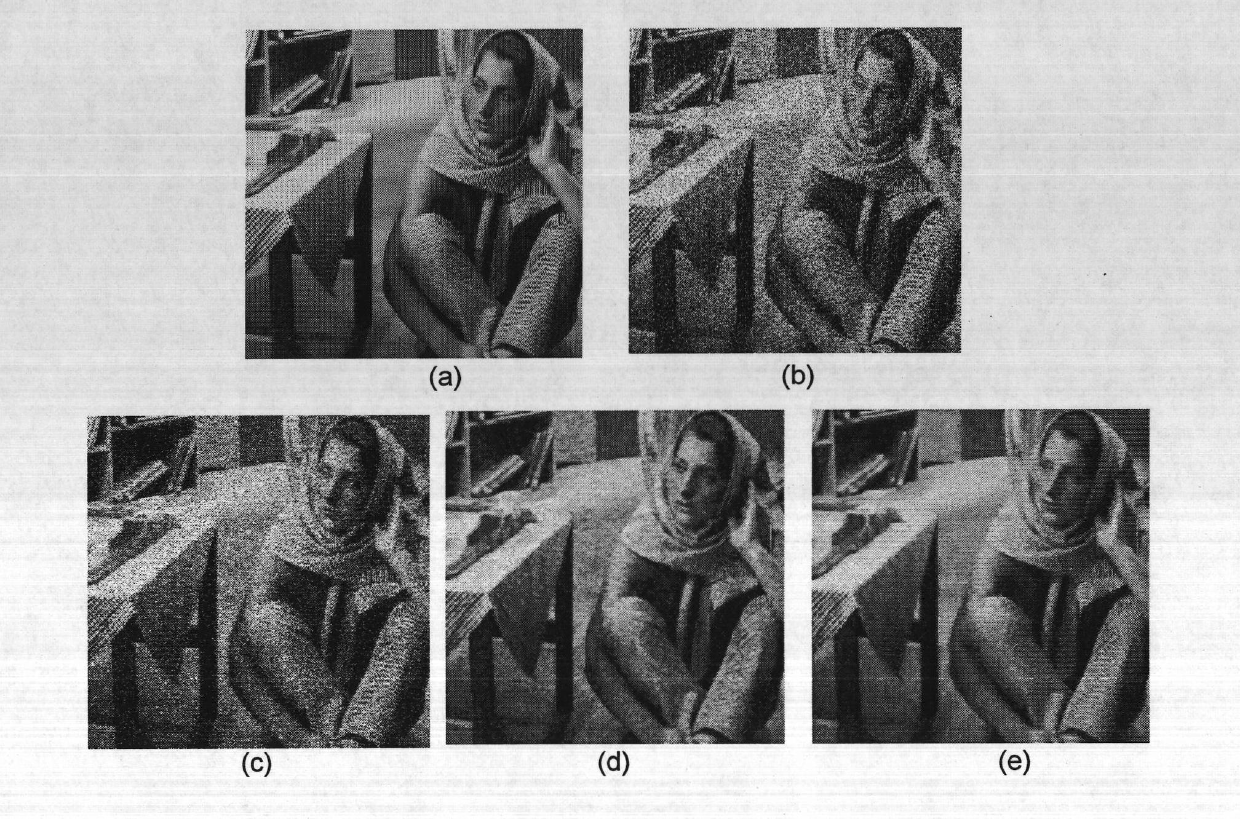Denoising method of strong noise pollution image on basis of partial differential equation
A partial differential equation and strong noise technology, applied in the field of image processing, can solve the problems of unsatisfactory denoising effect, unsatisfactory denoising results, poor denoising results, etc., to achieve reduced interference, improved accuracy, and improved The effect of running speed
- Summary
- Abstract
- Description
- Claims
- Application Information
AI Technical Summary
Problems solved by technology
Method used
Image
Examples
Embodiment Construction
[0038] refer to figure 1 , the specific implementation steps of the present invention are as follows:
[0039] Step 1. The input size is M×N single noise image u 0 , use the wavelet soft thresholding method to image u 0 Perform pre-filtering to minimize the interference of strong noise on image texture details, so as to calculate edges and diffusion directions more accurately. The filtered result is recorded as u. In this example, both M and N are 512 or 256.
[0040] Step 2. Calculate the partial derivative of the image u in the x direction and the partial derivative in the y direction
[0041] Step 3. Based on the calculated partial derivatives and , use the gradient formula to calculate the gradient of the noise image u and gradient modulus
[0042] gradient gradient modulus
[0043] Among them, u x express , u y express
[0044] In the process of image denoising, it is required to retain as much detail information of the image itself as possible ...
PUM
 Login to View More
Login to View More Abstract
Description
Claims
Application Information
 Login to View More
Login to View More - R&D
- Intellectual Property
- Life Sciences
- Materials
- Tech Scout
- Unparalleled Data Quality
- Higher Quality Content
- 60% Fewer Hallucinations
Browse by: Latest US Patents, China's latest patents, Technical Efficacy Thesaurus, Application Domain, Technology Topic, Popular Technical Reports.
© 2025 PatSnap. All rights reserved.Legal|Privacy policy|Modern Slavery Act Transparency Statement|Sitemap|About US| Contact US: help@patsnap.com



